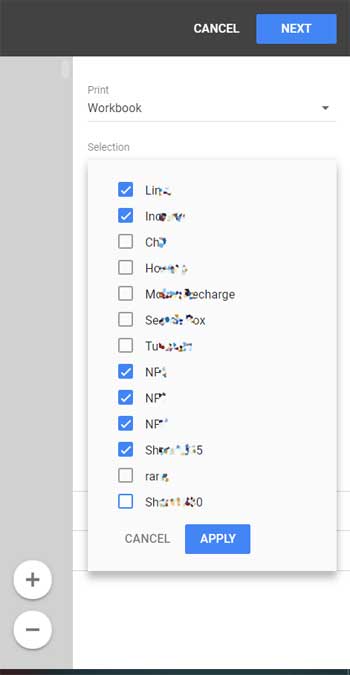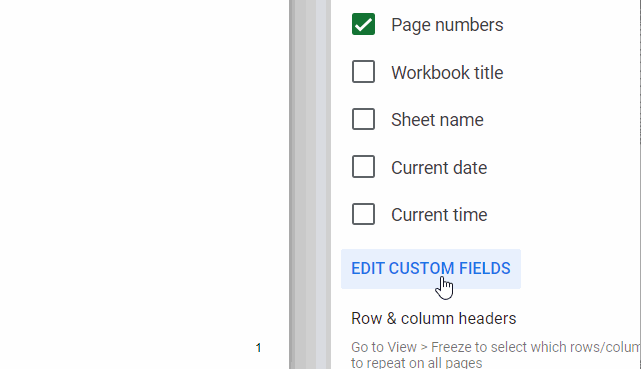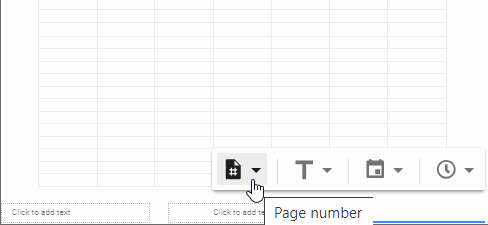To achieve consistent page numbering (X of Y) across multiple sheets, you need to select all the sheet tabs you want to print. However, this process differs from Excel.
In Excel, you can select multiple spreadsheets for printing by selecting tabs from within the tab bar.
Use the Ctrl key to select multiple tabs by pressing and holding this key while selecting your desired tabs. If you want to select continuous tabs, press and hold the Shift key and select two sheets (from and to).
In Google Sheets, while you can similarly select multiple sheets, it does not impact the print settings.
So, how can you print sequential page numbers with multiple sheets in Google Sheets?
Google Sheets provides this feature directly within the print setup. Here are the steps to print continuous page numbers across sheet tabs in Google Sheets:
Print Settings for Continuous Page Numbers Across Sheets
I’ll take you straight to the settings:
- Open the Google Sheets file that you want to print. Ensure you are online while working in Sheets.
- Go to the File menu and click Print.
- In the Print settings panel on the right side of your screen, select “Workbook” under “Print”.
- Under “Selection”, choose “All sheets” if you want to print the entire file. Otherwise, select the individual tabs you want and click “Apply”.
The screenshot below may help you apply these print settings.

You’ve completed the essential steps. The remaining steps are straightforward:
- Click “Headers and footers”.
- Check the tickbox beside “Page numbers”.
This will enable continuous page numbers across sheet tabs in Google Sheets.
Add Page Numbers (X of Y)
You can insert three types of page numbers when printing a Google Sheets file:
[PageA]returns page numbers such as 1, 2, 3, …, which is the default format.[PageB]returns page numbers such as Page 1, Page 2, Page 3, …[PageC]returns page numbers such as Pg 1, Pg 2, Pg 3, …
To add page numbers in the format “Page X of Y” (e.g., Page 1 of 3, Page 2 of 3, Page 3 of 3), where Y represents the total number of pages and is dynamic, you should use the format [PageB] of [PageA]. Here’s how to set it up:

- Under “Headers and footers” (see step #5 above) in the Print settings, click the blue link “EDIT CUSTOM FIELDS” in the right-side panel.
- In the print preview, click on the page number field.
- Delete any existing placeholder text in the field (e.g., delete
[PageA]). - Click the Page Number option and select the formatting that shows “Page 1,” which will insert the placeholder [PageB].

- Next to [PageB], type ” of “.
- Click on the “1” in the page number field, which will insert [PageA].
- Click on the content area (the grid area in the preview).
- Click the CONFIRM button.
This will insert page numbers in the format “Page X of Y” in your Google Sheets printouts.





















